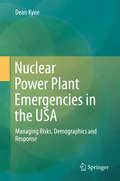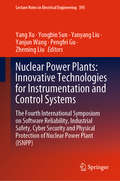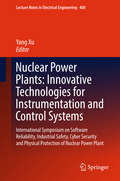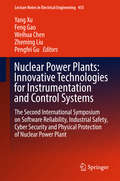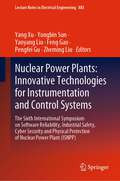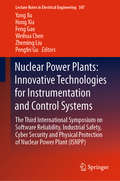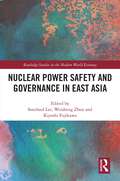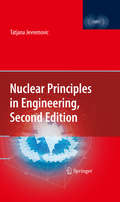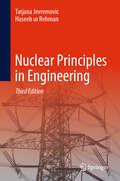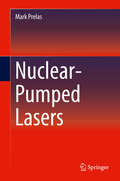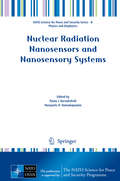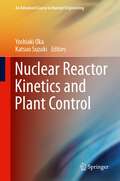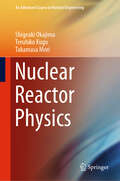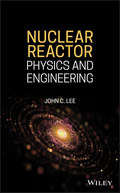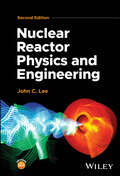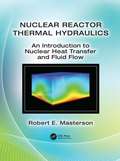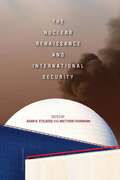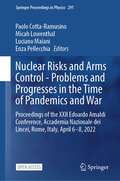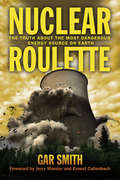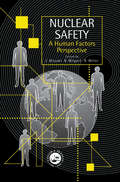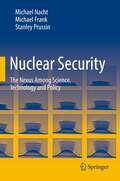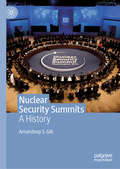- Table View
- List View
Nuclear Power Plant Emergencies in the USA: Managing Risks, Demographics and Response
by Dean KyneManaging nuclear power emergencies is significantly different from managing other types of emergencies, including fire, flood, and other disasters because nuclear disaster management requires special technical skills and a rigid protocol which outlines detailed steps and procedure before an evacuation announcement could be made. It was evident that the impacts from a nuclear power core-meltdown accident were immerse, irreversible, and inevitable, as evident by evaluating the three historic core-meltdown accidents, namely Three Mile Island in 1997, Chernobyl in 1986, and Fukushima Daiichi in 2011. The three options for minimizing the risks associated with NPPs are suggesting elimination of all NPPs in operation in the United States, transforming inevitable risks to evitable risks, and transforming the current radiological plan into an effective emergency management plan. Being the latter option is the only viable one, this book provides a comprehensive understanding on effectively managing nuclear power emergencies in the U.S. The book presents detailed analysis on effectively managing nuclear power emergencies. In an attempt to illustrate minimizing the risks, factual answers to the key questions surrounding managing nuclear disasters are outlined. What are the risks associated with the nuclear power plants (NPP)? What are the problems associated with managing nuclear power core-meltdown accidents in the three historic accidents? Where are the geographical locations of the 99 commercial reactors in the U.S? Who are those exposed to potential risks associated with the NPPs? How could a projection of radioactive plume dispersion pathway be carried out using a spatial computer code, such as the Radiological Assessment Systems for Consequence Analysis (RASCAL) in case of a core-meltdown accident? Where would the radioactive plume go given weather conditions? Who are more likely to be exposed to the high level radiation dose during the core-meltdown accident? What are the issues with the current radiological emergency plan?
Nuclear Power Plants: The Fourth International Symposium on Software Reliability, Industrial Safety, Cyber Security and Physical Protection of Nuclear Power Plant (ISNPP) (Lecture Notes in Electrical Engineering #595)
by Yanjun Wang Yang Xu Zheming Liu Pengfei Gu Yongbin Sun Yanyang LiuThis book presents a compilation of selected papers from the Fourth International Symposium on Software Reliability, Industrial Safety, Cyber Security and Physical Protection of Nuclear Power Plant, held in August 2019 in Guiyang, China. The purpose of the symposium was to discuss inspection, testing, certification and research concerning the software and hardware of instrument and control (I&C) systems used at nuclear power plants (NPP), such as sensors, actuators and control systems. The event provides a venue for exchange among experts, scholars and nuclear power practitioners, as well as a platform for the combination of teaching and research at universities and enterprises to promote the safe development of nuclear power plants. Readers will find a wealth of valuable insights into achieving safer and more efficient instrumentation and control systems.
Nuclear Power Plants: Innovative Technologies for Instrumentation and Control Systems
by Yang XuThese proceedings present the latest information on software reliability, industrial safety, cyber security, physical protection, testing and verification for nuclear power plants. The papers were selected from more than 80 submissions and presented at the First International Symposium on Software Reliability, Industrial Safety, Cyber Security and Physical Protection for Nuclear Power Plants, held in Yinchuan, China on May 30 - June 1, 2016. The primary aim of this symposium was to provide a platform to facilitate the discussion for comprehension, application and management of digital instrumentation, control systems and technologies in nuclear power plants. The book reflects not only the state of the art and latest trends in nuclear instrumentation and control system technologies, but also China's increasing influence in this area. It is a valuable resource for both practitioners and academics working in the field of nuclear instrumentation, control systems and other safety-critical systems, as well as nuclear power plant managers, public officials and regulatory authorities.
Nuclear Power Plants: Innovative Technologies for Instrumentation and Control Systems
by Yang Xu Feng Gao Weihua Chen Zheming Liu Pengfei GuThese proceedings present the latest information on software reliability, industrial safety, cyber security, physical protection, testing and verification for nuclear power plants. The papers were selected from more than 80 submissions and presented at the First International Symposium on Software Reliability, Industrial Safety, Cyber Security and Physical Protection for Nuclear Power Plants, held in Yinchuan, China on May 30 - June 1, 2016. The primary aim of this symposium was to provide a platform to facilitate the discussion for comprehension, application and management of digital instrumentation, control systems and technologies in nuclear power plants. The book reflects not only the state of the art and latest trends in nuclear instrumentation and control system technologies, but also China's increasing influence in this area. It is a valuable resource for both practitioners and academics working in the field of nuclear instrumentation, control systems and other safety-critical systems, as well as nuclear power plant managers, public officials and regulatory authorities.
Nuclear Power Plants: The Fifth International Symposium on Software Reliability, Industrial Safety, Cyber Security and Physical Protection of Nuclear Power Plant (ISNPP) (Lecture Notes in Electrical Engineering #779)
by Yang Xu Yongbin Sun Yanyang Liu Feng Gao Pengfei Gu Zheming LiuThis book is a compilation of selected papers from the fifth International Symposium on Software Reliability, Industrial Safety, Cyber Security and Physical Protection of Nuclear Power Plant, held in November 2020 in Beijing, China. The purpose of this symposium is to discuss Inspection, test, certification and research for the software and hardware of Instrument and Control (I&C) systems in nuclear power plants (NPP), such as sensors, actuators and control system. It aims to provide a platform of technical exchange and experience sharing for those broad masses of experts and scholars and nuclear power practitioners, and for the combination of production, teaching and research in universities and enterprises to promote the safe development of nuclear power plant. Readers will find a wealth of valuable insights into achieving safer and more efficient instrumentation and control systems.
Nuclear Power Plants: The Sixth International Symposium on Software Reliability, Industrial Safety, Cyber Security and Physical Protection of Nuclear Power Plant (ISNPP) (Lecture Notes in Electrical Engineering #883)
by Yang Xu Yongbin Sun Yanyang Liu Feng Gao Pengfei Gu Zheming LiuThis book is a compilation of selected papers from the Sixth International Symposium on Software Reliability, Industrial Safety, Cyber Security and Physical Protection of Nuclear Power Plant, held in October 2021 in Zhuji, Zhejiang, China. The purpose of this symposium is to discuss Inspection, test, certification and research for the software and hardware of Instrument and Control (I&C) systems in nuclear power plants (NPP), such as sensors, actuators and control system. It aims to provide a platform of technical exchange and experience sharing for those broad masses of experts and scholars and nuclear power practitioners, and for the combination of production, teaching and research in universities and enterprises to promote the safe development of nuclear power plant. Readers will find a wealth of valuable insights into achieving safer and more efficient instrumentation and control systems.
Nuclear Power Plants: The Third International Symposium on Software Reliability, Industrial Safety, Cyber Security and Physical Protection of Nuclear Power Plant (ISNPP) (Lecture Notes in Electrical Engineering #507)
by Yang Xu Hong Xia Feng Gao Weihua Chen Zheming Liu Pengfei GuThis book is a compilation of selected papers from the 3rd International Symposium on Software Reliability, Industrial Safety, Cyber Security and Physical Protection of Nuclear Power Plants, held in Harbin, China on 15th–17th August 2018. The symposium discussed the status quo, technical advances and development direction of digital instrument control technology, software reliability, information security and physical protection in the process of nuclear power development. Offering technical insights and know from leading experts, this book is a valuable resource for both practitioners and academics working in the field of nuclear instrumentation, control systems and other safety-critical systems, as well as nuclear power plant managers, public officials, and regulatory authorities.
Nuclear Power Safety and Governance in East Asia (Routledge Studies in the Modern World Economy)
by Soocheol Lee Weisheng Zhou Kiyoshi FujikawaConfronting the challenges of nuclear power governance, this book provides pathways to nuclear safety cooperation between countries in East Asia where regional cooperation is challenged by geopolitical tensions. The book is split into three parts: first looking at nuclear risk and safety communications, second on nuclear policy and harmonization of safety standards, and third a comparative analysis of nuclear regulatory agencies in East Asia. Taken as a whole, the contributors recommend the establishment of a nuclear safety system that, which allows for mutual verification of safety standards at the regional level, and a regulatory framework with international credibility, which will help standardize risk communication. They suggest that the exchange of experiences involving nuclear power plant safety, efforts toward common safety standards, safety management, and collaborative efforts between Japan, China, and South Korea are extremely urgent issues. By comparing the European system of nuclear governance with that of East Asia, the book highlights the need for nuclear safety organizations in East Asia to strengthen interconnections and build regional linkages. This book will be of interest to policymakers, academics, and researchers in the field of energy policy, energy economics, nuclear safety, nuclear governance, and nuclear engineering.
Nuclear Principles in Engineering
by Tatjana JevremovicNuclear engineering plays an important role in various industrial, health care, and energy processes. Modern physics has generated its fundamental principles. A growing number of students and practicing engineers need updated material to access the technical language and content of nuclear principles. "Nuclear Principles in Engineering, Second Edition" is written for students, engineers, physicians and scientists who need up-to-date information in basic nuclear concepts and calculation methods using numerous examples and illustrative computer application areas. This new edition features a modern graphical interpretation of the phenomena described in the book fused with the results from research and new applications of nuclear engineering, including but not limited to nuclear engineering, power engineering, homeland security, health physics, radiation treatment and imaging, radiation shielding systems, aerospace and propulsion engineering, and power production propulsion.
Nuclear Principles in Engineering
by Tatjana Jevremovic Haseeb ur RehmanSeveral emerging application areas are driving a revival in nuclear engineering, including new nuclear reactor designs (advanced water-cooled reactors, small modular reactors, and microreactors) and their various applications beyond electricity production and a revolution in nuclear medicine, nuclear space exploration, hydrogen production, and homeland security. This fully updated introductory textbook provides students and practitioners with the fundamentals of nuclear principles in engineering for a thorough understanding of physical processes relating to neutron physics, nuclear structures, and radiation interactions. To comprehend physical phenomena, hands-on computational exercises supported by mathematical details and real-life examples are provided to communicate the nuclear principles concepts. A new chapter details the evolution of nuclear power plants, explaining the modern-day technologies based on design details linked to the basic principles of nuclear engineering. In addition, every chapter is supplied with the problems solutions and answers. Nuclear Principles in Engineering, Third Edition, is written for students, engineers, physicists, and scientists who need up-to-date information on basic nuclear concepts and calculation methods, and will serve as an invaluable resource for training programs in the nuclear sector.
Nuclear-Pumped Lasers
by Mark PrelasThis book focuses on Nuclear-Pumped Laser (NPL) technology and provides the reader with a fundamental understanding of NPLs, a review of research in the field and exploration of large scale NPL system design and applications. Early chapters look at the fundamental properties of lasers, nuclear-pumping and nuclear reactions that may be used as drivers for nuclear-pumped lasers. The book goes on to explore the efficient transport of energy from the ionizing radiation to the laser medium and then the operational characteristics of existing nuclear-pumped lasers. Models based on Mathematica, explanations and a tutorial all assist the reader's understanding of this technology. Later chapters consider the integration of the various systems involved in NPLs and the ways in which they can be used, including beyond the military agenda. As readers will discover, there are significant humanitarian applications for high energy/power lasers, such as deflecting asteroids, space propulsion, power transmission and mining. This book will appeal to graduate students and scholars across diverse disciplines, including nuclear engineering, laser physics, quantum electronics, gaseous electronics, optics, photonics, space systems engineering, materials, thermodynamics, chemistry and physics.
Nuclear Radiation Nanosensors and Nanosensory Systems
by Paata J. Kervalishvili Panayotis H. YannakopoulosThis collection of selected review papers focuses on topics such as digital radiation sensors and nanosensory systems for nanotechnology applications and integrated X-ray/PET/CT detectors; nanophosphors and nanocrystal quantum dots as X-ray radiation sensors; the luminescence efficiency of CdSe/ZnS QD and UV-induced luminescence efficiency distribution; investigations devoted to the quantum and multi-parametrical nature of disasters and the modeling thereof using quantum search and quantum query algorithms; sum-frequency-generation, IR fourier and raman spectroscopy methods; as well as investigations into the vibrational modes of viruses and other pathogenic microorganisms aimed at creating optical biosensory systems. This is followed by a review of radiation resistant semiconductor sensors and magnetic measurement instrumentation for magnetic diagnostics of high-tech fission and fusion set-ups and accelerators; the evaluation of the use of neutron-radiation, 10B-enriched semiconducting materials as thin-film, highly reliable, highly sensitive and fast-acting robust solid-state electronic neutron-detectors; and the irradiation of n-Si crystals with protons, which converts the "metallic" inclusions to "dielectric" ones in isochronous annealing, therefore leading to opto/micro/nanoelectronic devices, including nuclear radiation nanosensors. The book concludes with a comparative study of the nitride and sulfide chemisorbed layers; a chemical model that describes the formation of such layers in hydrazine-sulfide and water sodium sulfide solution; and recent developments in the microwave-enhanced processing and microwave-assisted synthesis of nanoparticles and nanomaterials using Mn(OH)2.
Nuclear Reactor Design
by Yoshiaki OkaThis book focuses on core design and methods for design and analysis. It is based on advances made in nuclear power utilization and computational methods over the past 40 years, covering core design of boiling water reactors and pressurized water reactors, as well as fast reactors and high-temperature gas-cooled reactors. The objectives of this book are to help graduate and advanced undergraduate students to understand core design and analysis, and to serve as a background reference for engineers actively working in light water reactors. Methodologies for core design and analysis, together with physical descriptions, are emphasized. The book also covers coupled thermal hydraulic core calculations, plant dynamics, and safety analysis, allowing readers to understand core design in relation to plant control and safety.
Nuclear Reactor Kinetics and Plant Control
by Katsuo Suzuki Yoshiaki OkaUnderstanding time-dependent behaviors of nuclear reactors and the methods of their control is essential to the operation and safety of nuclear power plants. This book provides graduate students, researchers, and engineers in nuclear engineering comprehensive information on both the fundamental theory of nuclear reactor kinetics and control and the state-of-the-art practice in actual plants, as well as the idea of how to bridge the two. The first part focuses on understanding fundamental nuclear kinetics. It introduces delayed neutrons, fission chain reactions, point kinetics theory, reactivity feedbacks, and related measurement techniques. The second part helps readers to grasp the theories and practice of nuclear power plant control. It introduces control theory, nuclear reactor stability, and the operation and control of existing nuclear power plants such as a typical pressurized water reactor, a typical boiling water reactor, the prototype fast breeder reactor Monju, and the high-temperature gas-cooled test reactor (HTTR). Wherever possible, the design and operation data for these plants are provided.
Nuclear Reactor Physics (An Advanced Course in Nuclear Engineering #5)
by Shigeaki Okajima Teruhiko Kugo Takamasa MoriThis book covers introductory subjects including fundamental principles of nuclear reactions with neutrons, fundamentals of nuclear fission chain reactions, basic concepts of criticality, and static characteristics based on diffusion approximation in neutron transport. The chapters address topics ranging from neutron moderation from fission to thermal energy ranges and heterogeneity effects in neutronics. Readers will find elementary and qualitative descriptions and also mathematical expressions including approximations, derivations and analytical solutions for an understanding of the basic principles of nuclear reactor physics. This book is part of a series entitled An Advanced Course in Nuclear Engineering and provides an accessible introduction to the core discipline of nuclear engineering: nuclear reactor physics. It will therefore appeal to engineers in nuclear engineering as well as to university students and others seeking to learn entry-level reactor physics.
Nuclear Reactor Physics and Engineering
by John C. LeeAn introductory text for broad areas of nuclear reactor physics Nuclear Reactor Physics and Engineering offers information on analysis, design, control, and operation of nuclear reactors. The author—a noted expert on the topic—explores the fundamentals and presents the mathematical formulations that are grounded in differential equations and linear algebra. The book puts the focus on the use of neutron diffusion theory for the development of techniques for lattice physics and global reactor system analysis. The author also includes recent developments in numerical algorithms, including the Krylov subspace method, and the MATLAB software, including the Simulink toolbox, for efficient studies of steady-state and transient reactor configurations. In addition, nuclear fuel cycle and associated economics analysis are presented, together with the application of modern control theory to reactor operation. This important book: Provides a comprehensive introduction to the fundamental concepts of nuclear reactor physics and engineering Contains information on nuclear reactor kinetics and reactor design analysis Presents illustrative examples to enhance understanding Offers self-contained derivation of fluid conservation equations Written for undergraduate and graduate students in nuclear engineering and practicing engineers, Nuclear Reactor Physics and Engineering covers the fundamental concepts and tools of nuclear reactor physics and analysis.
Nuclear Reactor Physics and Engineering
by John C. LeeEssential guide to analyzing nuclear energy systems, with focus on reactor physics, fuel cycle, system dynamics, thermal-hydraulics, and economics. Nuclear Reactor Physics and Engineering highlights efforts in utilizing low enrichment uranium fuel as a substitute for carbon-based fuels in energy generation and provides an overview of important aspects of nuclear reactor physics utilizing the neutron diffusion equation for major reactor designs and MATLAB software for system analysis, with exercises illustrating key points and design parameters as supplementary material. This revised and updated Second Edition reflects key findings of the 2023 National Academy of Sciences (NAS) report and discusses physical and engineering characteristics of advanced nuclear reactors, especially in the form of small modular reactors that have the potential to provide enhanced safety and economics, as well as effective long-term management of used nuclear fuel in geological repositories. Key topics explored in the updated edition of Nuclear Reactor Physics and Engineering include: Impact of the use of high-assay low enrichment uranium (HALEU) fuel as a new efficient nuclear fuelAdvantages resulting from combined uses of light water reactor and sodium-cooled fast reactor with fuel reprocessingFundamental nuclear reactor physics, nuclear reactor system analysis, and lattice physics analysis for reactor cores Nuclear fuel cycle analysis, nuclear plant simulation and control, and management of used nuclear fuelEconomic analysis of nuclear electricity and thermal-hydraulic analysis of nuclear systems. With a wealth of all-new information detailing the state of the art in the field, Nuclear Reactor Physics and Engineering is an invaluable reference on the subject for undergraduate and graduate students in nuclear engineering, as well as practicing engineers involved with nuclear power plants.
Nuclear Reactor Thermal Hydraulics: An Introduction to Nuclear Heat Transfer and Fluid Flow
by Robert E. MastersonNuclear Thermal-Hydraulic Systems provides a comprehensive approach to nuclear reactor thermal-hydraulics, reflecting the latest technologies, reactor designs, and safety considerations. The text makes extensive use of color images, internet links, computer graphics, and other innovative techniques to explore nuclear power plant design and operation. Key fluid mechanics, heat transfer, and nuclear engineering concepts are carefully explained, and supported with worked examples, tables, and graphics. Intended for use in one or two semester courses, the text is suitable for both undergraduate and graduate students. A complete Solutions Manual is available for professors adopting the text.
The Nuclear Renaissance and International Security
by Adam N. Stulberg Matthew FuhrmannInterest in nuclear energy has surged in recent years, yet there are risks that accompany the global diffusion of nuclear power—especially the possibility that the spread of nuclear energy will facilitate nuclear weapons proliferation. In this book, leading experts analyze the tradeoffs associated with nuclear energy and put the nuclear renaissance in historical context, evaluating both the causes and the strategic effects of nuclear energy development. They probe critical issues relating to the nuclear renaissance, including if and how peaceful nuclear programs contribute to nuclear weapons proliferation, whether the diffusion of nuclear technologies lead to an increase in the trafficking of nuclear materials, and under what circumstances the diffusion of nuclear technologies and latent nuclear weapons capabilities can influence international stability and conflict. The book will help scholars and policymakers understand why countries are pursuing nuclear energy and evaluate whether this is a trend we should welcome or fear.
Nuclear Risks and Arms Control - Problems and Progresses in the Time of Pandemics and War: Proceedings of the XXII Edoardo Amaldi Conference, Accademia Nazionale dei Lincei, Rome, Italy, April 6–8, 2022 (Springer Proceedings in Physics #291)
by Paolo Cotta-Ramusino Micah Lowenthal Luciano Maiani Enza PellecchiaThis open access book is based on the conference organised by Accademia dei Lincei and the US National Academy of Sciences and supported by the Italian Ministero degli Affari Esteri. It was attended by about 60 scientists and researchers from 13 countries, including, besides Europe, Iran, Israel, Iraq, Pakistan, India, Japan, Russian Federation and the USA. In an international scenario shaken by the uncertainties of the pandemic and the war between Russia and Ukraine, dialogue and scientific collaboration are confirmed to be precious tools to enhance nuclear safety, security and non-proliferation. The urgency to open peace discussions in Ukraine was emphasised by all participants, and the belief that science can make an essential contribution to peace construction was reaffirmed. Current challenges (some new, such as autonomous weapons and the use of artificial intelligence for war purposes) are discussed and attempts made to identify possible solutions and future improvements, including in the field of sustainable energy development.
Nuclear Roulette: The Truth About the Most Dangerous Energy Source on Earth
by Gar SmithNuclear power is not clean, cheap, or safe. With Three Mile Island, Chernobyl, and Fukushima, the nuclear industry's record of catastrophic failures now averages one major disaster every decade. After three US-designed plants exploded in Japan, many countries moved to abandon reactors for renewables. In the United States, however, powerful corporations and a compliant government still defend nuclear power-while promising billion-dollar bailouts to operators. Each new disaster demonstrates that the nuclear industry and governments lie to "avoid panic," to preserve the myth of "safe, clean" nuclear power, and to sustain government subsidies. Tokyo and Washington both covered up Fukushima's radiation risks and-when confronted with damning evidence-simply raised the levels of "acceptable" risk to match the greater levels of exposure. Nuclear Roulettedismantles the core arguments behind the nuclear-industrial complex's "Nuclear Renaissance. " While some critiques are familiar-nuclear power is too costly, too dangerous, and too unstable-others are surprising:Nuclear Rouletteexposes historic links to nuclear weapons, impacts on Indigenous lands and lives, and the ways in which the Nuclear Regulatory Commission too often takes its lead from industry, rewriting rules to keep failing plants in compliance. Nuclear Roulettecites NRC records showing how corporations routinely defer maintenance and lists resulting "near-misses" in the US, which average more than one per month. Nuclear Roulettechronicles the problems of aging reactors, uncovers the costly challenge of decommissioning, explores the industry's greatest seismic risks-not on California's quake-prone coast but in the Midwest and Southeast-and explains how solar flares could black out power grids, causing the world's 400-plus reactors to self-destruct. This powerful exposé concludes with a roundup of proven and potential energy solutions that can replace nuclear technology with a "Renewable Renaissance," combined with conservation programs that can cleanse the air, and cool the planet.
Nuclear Safety: A Human Factors Perspective
by Bernhard Wilpert Jyuji Misumi Rainer MillerFor many years, as a direct result of international governmental concern, the nuclear power industry has been at the forefront of industrial safety. This text represents a cross-disciplinary look at the human factors developments in this industry, with wider applications for the entire industrial sector. Technical, psychological and social aspects
Nuclear Science (Merit Badge Series)
by Boy Scouts of AmericaThis is the booklet for the Boy Scouts of America, Nuclear Science merit badge. It describes the requirements for achieving the merit badge plus useful background information, careers in the field, and further references. The merit badge requirements include knowledge of sources of nuclear radiation, safety measures, environmental effects, nuclear power plants, use in agriculture, medicine, manufacturing and scientific research.
Nuclear Security: The Nexus Among Science, Technology and Policy
by Michael Nacht Michael Frank Stanley PrussinThis textbook is the first comprehensive and systematic account of the science, technology and policy issues associated with nuclear energy and nuclear weapons. Throughout their account of the evolution of nuclear policy, from its origin to the early Trump presidency, the authors interweave clear technical expositions of the science and technology that underpin and constrain it. The book begins by tracing the early work in atomic physics, the discovery of fission, and the developments that led to the Manhattan Project and the delivery of atomic bombs against Japan that ended World War II. It follows the initial failed attempts at nuclear disarmament, the onset of the Cold War nuclear arms competition, and the development of light water reactors to harness nuclear energy for electric power generation. The authors thoroughly unpack the problem of nuclear proliferation, examining the strategy and incentives for states that have and have not pursued nuclear weapons, and providing an overview of the nuclear arsenals of the current nuclear weapon states. They trace the technical, political and strategic evolution of deterrence, arms control and disarmament policies from the first attempts for an Outer Space Treaty in 1957 through the new START treaty of 2009. At critical junctures in the narrative, the authors explain the relevant nuclear science and technology including nuclear fission and criticality; nuclear materials and enrichment; nuclear detonation and nuclear weapons effects; nuclear weapons stockpile constraints, stewardship and surveillance; nuclear fusion and thermonuclear weapons; technologies for monitoring, verification and proliferation; and nuclear forensics. They conclude with an assessment of contemporary issues ranging from the Joint Comprehensive Plan of Action reached to halt Iran’s nuclear weapons development program, to the threat of nuclear terrorism, the perceived nuclear weapons policies of Russia and China, and the US efforts to provide disincentives for its allies to acquire their own nuclear weapons by maintaining credible security guarantees.
Nuclear Security Summits: A History
by Amandeep S. GillThis book describes the four Nuclear Security Summits held over 2010-2016 at the initiative of U.S. President Barack Obama. The author draws upon his unique vantage point as a participant in the Summits, exclusive interviews with practitioners, and access to primary documents, to write an engaging history of the NSS and of nuclear security in general. The story of the NSS is also in part the story of multilateral nuclear forums, which have sprung up regularly since the dawn of the nuclear age to address perceived nuclear dangers. The success of these Summits in addressing the threat of nuclear terrorism holds important lessons for the design and work of nuclear forums today and into the future. The author presents a new approach to assessing ‘international learning’ that has important implications for the design of multilateral forums and updates the Cold War areas of nuclear knowledge being ‘learnt’ in the light of the NSS experience and other recent developments. This work will be of interest to scholars and practitioners in security studies, nuclear history, and International Relations.
